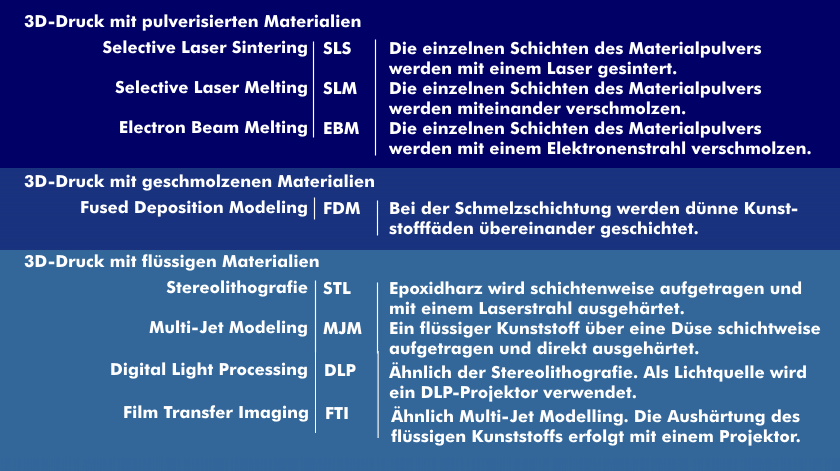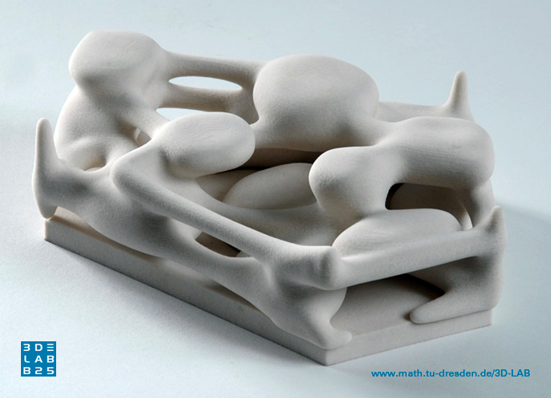3D printing
Dating back to the 1980s, 3D printing is a print-based prototyping process known as rapid prototyping. By improving the quality of printing technology and reducing printer costs, 3D printing can be used in broader applications.
For example, in industry for prototyping or rapid prototyping, electronics for printed electronics, in the development and design of 3D models, and in medical technology for the production of implants, organs and prostheses.
The principle of 3D printing works layer by layer. The printed object is created layer by layer using a plastic strand called filament. The filament layers are printed on top of each other and each new layer is firmly bonded to the one below. In this way, the calculated physical 3D model is built up successively. Depending on the 3D printing process, the filament consists of a thin plastic strand made of powder-like polymers, metal powder, ceramic powder or resin. The individual layers are cured, sintered or fused together after each layer is printed. The 3D printed model is stable and reliable, and its size depends on the 3D printer used. It may well be several meters in size.
The 3D printing technology knows different additive procedures with which the individual layers are printed on top of each other. These processes are used, among other things, for the rapid production of prototypes and 3D models and are called Additive Manufacturing( AM). The opposite of this is Subtractive Manufacturing where the 3D model is obtained from a solid body by cutting, milling and drilling.
Printing techniques that use sintering and melting include Selective Laser Sintering( SLS), Selective Laser Melting( SLM), Fused Deposition Modeling( FDM), Electron Beam Melting( EBM) and Digital Light Processing( DLP).
Selective Laser Sintering uses polycarbonates, polyamides, polyvinyl chloride and metals as filaments, which are sintered or fused together in layers. In addition, Laminated Object Modeling( LOM) is a technique in which models are built up by partial coating. In this process, thin layers are cut out and combined to form a 3D model. In addition to 3D printing techniques using solid materials, there are also some processes that use liquid materials. One of the best known is stereolithography, which forms the basis for other processes.


